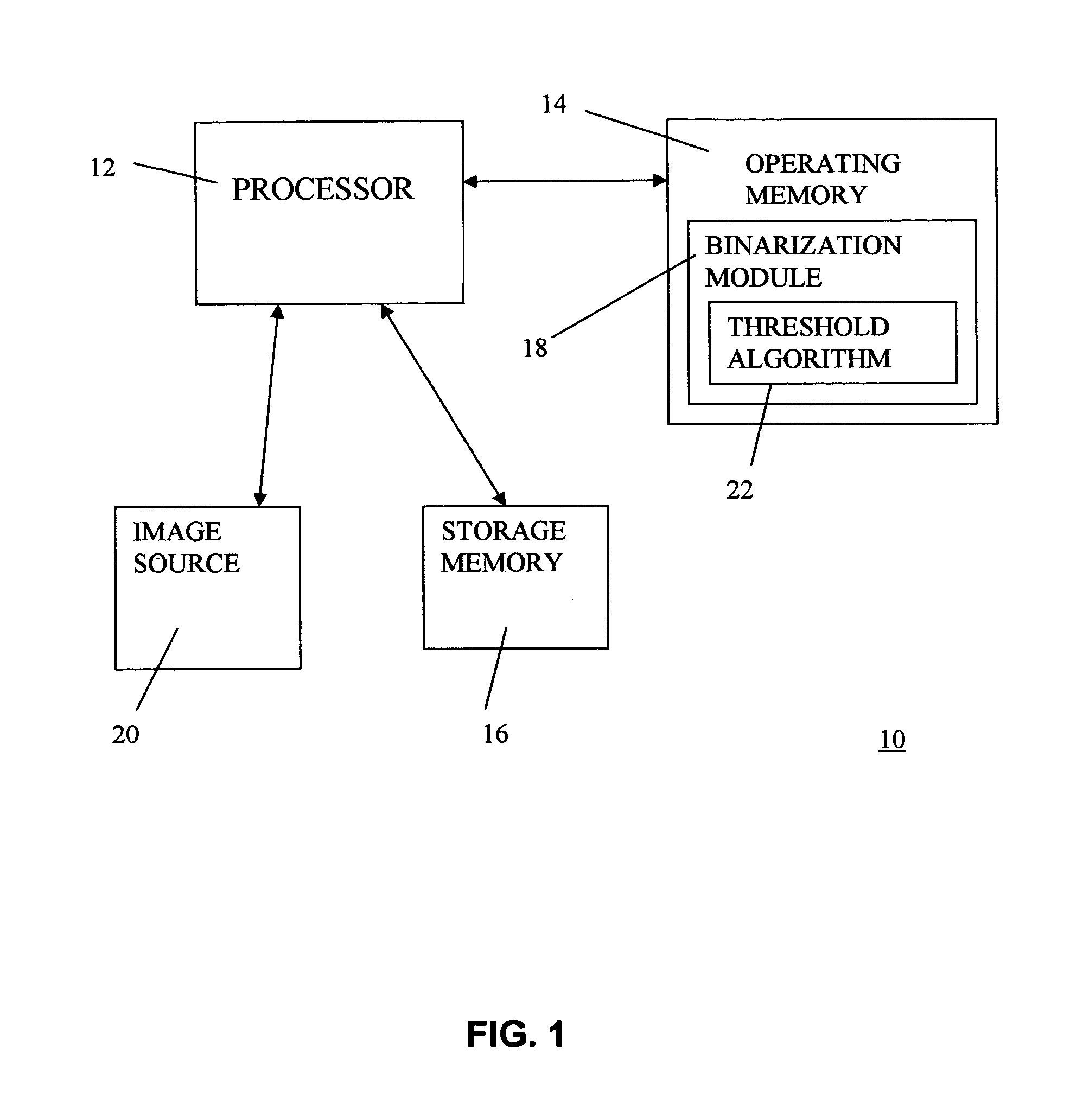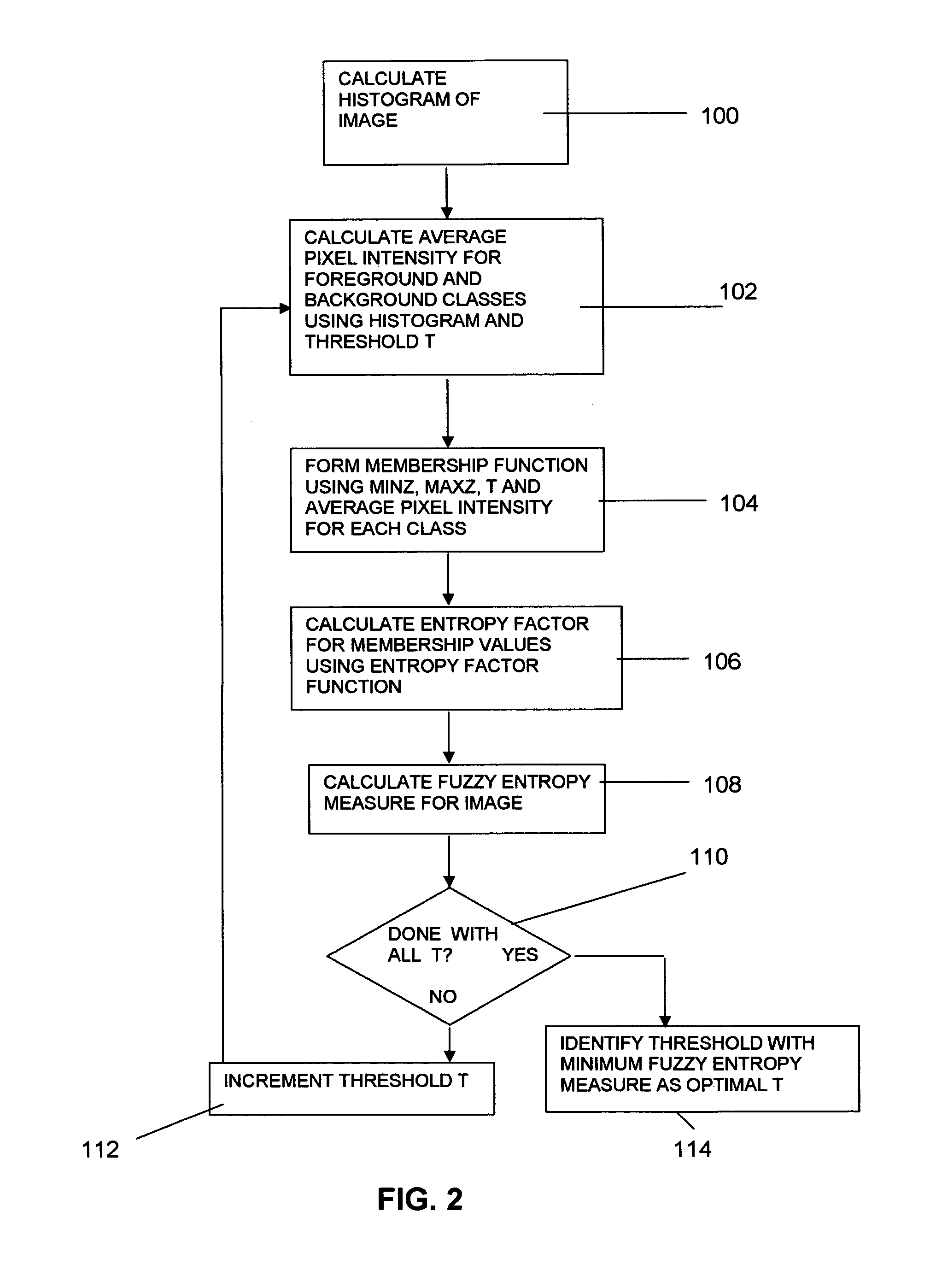Optimal binarization of gray-scaled digital images via fuzzy reasoning
a gray-scaled digital image and fuzzy reasoning technology, applied in image analysis, instruments, computing, etc., can solve the problems of increasing conversion accuracy at the expense of substantially more computational power and execution time, not providing the optimal threshold, and reducing the accuracy of measurement accuracy, so as to improve the accuracy and execution speed. , the effect of improving the accuracy
- Summary
- Abstract
- Description
- Claims
- Application Information
AI Technical Summary
Benefits of technology
Problems solved by technology
Method used
Image
Examples
Embodiment Construction
[0024]With reference to FIG. 1, a computer system 10 is illustrated which is configured to convert multiple bit gray-scale digital images into binary images using an image thresholding determination algorithm in accordance with a preferred embodiment of the present invention. The system 10 includes a processor 12 which is interfaced to an operating memory 14 and a storage memory 16, as is conventional. Loaded into the operating memory 14 is a binarization program or software module 18.
[0025]Gray-scale images to be converted to binary are either retrieved from the storage memory 16 or from an external image source 20 and are fed into the binarization program 18, which performs the conversion. To accomplish this, the binarization program includes a threshold determination algorithm or subroutine 22 that identifies the optimal threshold to be employed for converting the gray-scale image. The threshold T is selected by the algorithm 22 on an image by image basis and defines the gray lev...
PUM
 Login to View More
Login to View More Abstract
Description
Claims
Application Information
 Login to View More
Login to View More - R&D
- Intellectual Property
- Life Sciences
- Materials
- Tech Scout
- Unparalleled Data Quality
- Higher Quality Content
- 60% Fewer Hallucinations
Browse by: Latest US Patents, China's latest patents, Technical Efficacy Thesaurus, Application Domain, Technology Topic, Popular Technical Reports.
© 2025 PatSnap. All rights reserved.Legal|Privacy policy|Modern Slavery Act Transparency Statement|Sitemap|About US| Contact US: help@patsnap.com



